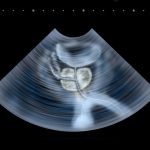Interstitial Cystitis in Men
Eric Yarnell, ND, RH (AHG)
Tolle Causam
For a long time the medical dogma has been that interstitial cystitis (IC) affects women 10 times more often than men.1 This idea was flawed for several reasons, particularly the simple absence of any attempt to look for IC in men with pelvic pain and instead labeling them as having chronic prostatitis. A large study in the Kaiser Permanente system in the late 1990s/early 2000s found that even just using existing criteria for a diagnosis of IC, as well as looking at men and women who had undergone cystoscopy, the incidence of IC was closer to 5:1 in women vs men.2 Another study, in Seattle, had 60 men with pelvic pain previously diagnosed with chronic prostatitis all undergo cystoscopy; 35 (58%) of the men were found to have signs consistent with IC.3 These and many other lines of evidence confirm that IC is actually fairly common in men; it is just misdiagnosed as chronic prostatitis.4
Diagnostic Dilemma
There are several conditions that commonly cause chronic or recurrent pelvic pain in men, but there is a lack of accurate testing to confirm which of these conditions is present. Cystoscopy can diagnose IC but it is too invasive and expensive for most patients, and it has real potential to provoke a disease flare. The digital rectal exam (DRE) often finds a non-tender prostate of normal texture in a patient with IC, or one that is only slightly tender or boggy (soft). Sometimes there is more serious pain and bogginess, which supports a diagnosis of inflammatory prostatitis, but this is hardly definitive.
Post-DRE urinalysis can be performed to help rule out bacterial and inflammatory chronic prostatitis; the former shows the presence of bacteria and white blood cells (WBC), while the latter shows only WBC. However, many men with inflammatory chronic prostatitis have normal post-DRE urinalyses, and there remains the strong possibility of non-inflammatory chronic pelvic pain being present. Biopsy of involved structures could probably clarify which condition is present, but of course is far too invasive.
Two Major Treatment Approaches
In many ways, though, differentiating IC and chronic prostatitis (of any type), chronic epididymitis, or chronic seminal vesiculitis is not that important in naturopathic practice.5 This is because the treatment is largely the same, as long as there is no sign of bacterial infection (which is rarely present). Here, 2 fundamental underlying problems are proposed as the root of all of IC and chronic prostatitis/vesiculitis/epididymitis: pelvic floor hypertonicity and increased urothelial permeability.
Pelvic Floor Hypertonicity
In some patients with chronic pelvic pain, chronic pelvic floor hypertonicity is clearly the root problem.6 The male pelvic floor is described in many different ways, but primarily consists of a thin sheet made up of the levator ani and coccygeus muscles (though the coccygeus is largely tendinous) and associated fascia. Hypertonicity and trigger points in these structures are believed to play a role in the development of IC in some men. This theory became most well known after publication of the book, Headache in the Pelvis, by David Wise, PhD, and Rodney Anderson, MD. Though this book and others claim that pelvic floor problems are rampant, I have only encountered it in approximately 10% of my IC/chronic prostatitis patients.
The basic assessment for pelvic floor hypertonicity in men is conducted via a small modification of the standard DRE. When the finger is about one-third to halfway in and clearly surrounded by the anal canal, pressure is applied laterally in several directions (essentially palpating the levator ani). Patients with hypertonicity usually experience pain or burning (locally or referred to the urethra) with this procedure. Pelvic floor physical therapists can do a moderately more-thorough exam if there is any doubt about the diagnosis.
Treating pelvic floor hypertonicity is relatively straightforward. Initially, it is recommended that patients try hot sitz baths for 15-20 minutes each night before bed (and again in the morning in severe cases); take magnesium (200 mg twice per day); and take either Pedicularis bracteosa (bracted lousewort) (fresh aerial parts tincture, 2-3 mL 3 times daily) or Piper methysticum (kava) root capsules (1000 mg 3 times daily). It is vital that patients not perform Kegel exercises, which further increase tone in the pelvic floor, thereby worsening the problem. They should also avoid prolonged sitting. Improvement is usually evident within 1-2 weeks and helps confirm the diagnosis. Some patients improve but don’t fully recover, and should then be referred to a pelvic floor physical therapist for additional treatment.
Leaky Urothelium
Patients who do not exhibit signs of pelvic floor hypertonicity most likely have increased urothelial permeability as the underlying problem causing their IC.7 The most definitive test available for this is the potassium sensitivity test.8 During cystoscopy, a hypertonic potassium solution is introduced. In patients with IC, this causes severe pain within minutes; in those without IC, it is painless. Usually intravesical, alkalinized lidocaine and heparin are applied after the test to stop the pain, but the procedure is sufficiently invasive that it often triggers a disease flare and therefore is not recommended for routine use. Instead, it is reserved for patients who don’t respond to multiple treatments or in whom the diagnosis is in doubt.
A less well-studied alternative is the anesthetic bladder challenge, in which alkalinized lidocaine or lignocaine solution is instilled into the bladder for 10-15 minutes.9 Improvement in symptoms helps confirm the presence of IC. The accuracy and precision of this test have not been rigorously determined, but it likely reduces pain from other conditions and so is not as widely used. In contrast to the potassium sensitivity test, the anesthetic bladder challenge has the advantage of not triggering disease flares.
Treatment of leaky urothelium is complex because it is often indirectly being caused by increased intestinal permeability, thus explaining the very common phenomenon of specific food intolerances in IC patients.10,11 In this theoretical model, leaky gut allows large molecules from food and possibly gut flora to interact with the intestinal immune system and trigger inflammation in the urothelium, which ultimately compromises the barrier function of the urothelium. Because these large molecules appear to cause more damage and continually worsen leaky gut, it is imperative to identify and remove triggering foods before real healing can occur. I recommend using a strict elimination/challenge diet for this purpose, as it detects reactions of all types, not just those mediated by IgE or IgG4 antibodies detected by serological food allergy testing.
Once the process to identify and remove triggers is initiated, agents with some potential to heal intestinal and urothelial leakage can be started. N-acetylglucosamine (NAG) is the most useful agent in this regard, based on clinical experience, though it appears to have only been studied for treating IC in cats.12 At a dose of 700 mg twice daily, NAG can really help restore membrane integrity. The prescription drug, pentosan sulfate (a synthetic glycosaminoglycan), at a dose of 100 mg 3 times daily, may also reduce urothelial permeability. Aloe vera leaf gel (2 oz twice daily) and glutamine (5 g 3 times daily) have also been shown to be clinically effective for reducing intestinal permeability.13 All of these treatments usually require several months to be effective.
Conclusion
IC should no longer be considered a condition that only affects women. It is well established that it affects men too, although these men are often diagnosed as having chronic prostatitis. It is not crucial to make this distinction, as treatment is similar. What is more important to distinguish is whether patients have pelvic floor hypertonicity or increased urothelial permeability as the underlying cause of the IC or other chronic pelvic pain syndrome. Natural treatments can be highly effective for men with these problems.
References:
- Metts JF. Interstitial cystitis: urgency and frequency syndrome. Am Fam Physician. 2001;64(7):1199-1206.
- Clemens JQ, Meenan RT, Rosetti MC, et al. Prevalence and incidence of interstitial cystitis in a managed care population. J Urol. 2005;173(1):98-102.
- Berger RE, Miller JE, Rothman I, et al. Bladder petechiae after cystoscopy and hydrodistension in men diagnosed with prostate pain. J Urol. 1998;159(1):83-85.
- Forrest JB, Nickel JC, Moldwin RM. Chronic prostatitis/chronic pelvic pain syndrome and male interstitial cystitis: enigmas and opportunities. Urology. 2007;69(4 Suppl):60-63.
- Yarnell E. Natural Approach to Urology. 2nd ed. Wenatchee, WA: Wild Brilliance Press; 2017.
- Bassaly R, Tidwell N, Bertolino S, et al. Myofascial pain and pelvic floor dysfunction in patients with interstitial cystitis. Int Urogynecol J. 2011;22(4):413-418.
- Elbadawi A, Light JK. Distinctive ultrastructural pathology of nonulcerative interstitial cystitis. Urol Int. 1996;56(3):137-162.
- Parsons CL, Greenberger M, Gabal L, et al. The role of urinary potassium in the pathogenesis and diagnosis of interstitial cystitis. J Urol. 1998;159(6):1862-1866.
- Taneja R. Intravesical lignocaine in the diagnosis of bladder pain syndrome. Int Urogynecol J. 2010;21(3):321-324.
- Johansson SL, Fall M. Pathology of interstitial cystitis. Urol Clin North Am. 1994;21(1):55-62.
- Friedlander JI, Shorter B, Moldwin RM. Diet and its role in interstitial cystitis/bladder pain syndrome (IC/BPS) and comorbid conditions. BJU Int. 2012;109(11):1584-1591.
- Panchaphanpong J, Asawakarn T, Pusoonthornthum R. Effects of oral administration of N-acetyl-D-glucosamine on plasma and urine concentrations of glycosaminoglycans in cats with idiopathic cystitis. Am J Vet Res. 2011;72(6):843-850.
- Yarnell E. Natural Approach to Gastroenterology. 2nd ed. Wenatchee, WA: Healing Mountain Publishing; 2010.
Image Copyright: <a href=’https://www.123rf.com/profile_pandavector’>pandavector / 123RF Stock Photo</a>
 Eric Yarnell, ND, RH (AHG), a 1996 Bastyr graduate, is a full professor in the Department of Botanical Medicine at Bastyr University. Dr Yarnell is the former chair of Botanical Medicine at SCNM and former editor of the Journal of Naturopathic Medicine. He is the CMO at Northwest Naturopathic Urology and has been focused on men’s health, urology, and nephrology for 15 of his 20 years in practice. He is also Chief Creativity Officer at Wild Brilliance Press, and President of Heron Botanicals. He has authored numerous textbooks, including Natural Approach to Urology and Men’s Health, Natural Approach to Gastroenterology, and Clinical Botanical Medicine, and he is the 2014 recipient of the AANP’s Vis Award.
Eric Yarnell, ND, RH (AHG), a 1996 Bastyr graduate, is a full professor in the Department of Botanical Medicine at Bastyr University. Dr Yarnell is the former chair of Botanical Medicine at SCNM and former editor of the Journal of Naturopathic Medicine. He is the CMO at Northwest Naturopathic Urology and has been focused on men’s health, urology, and nephrology for 15 of his 20 years in practice. He is also Chief Creativity Officer at Wild Brilliance Press, and President of Heron Botanicals. He has authored numerous textbooks, including Natural Approach to Urology and Men’s Health, Natural Approach to Gastroenterology, and Clinical Botanical Medicine, and he is the 2014 recipient of the AANP’s Vis Award.










